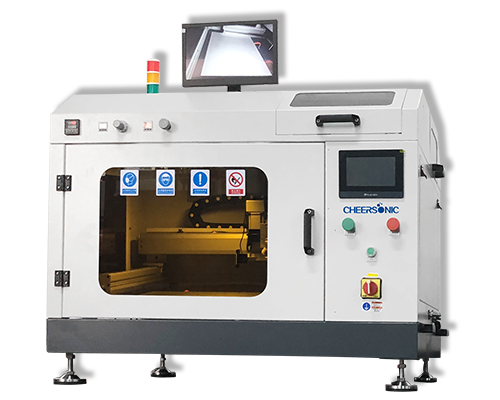Ultrasonic Spraying For SOEC Hydrogen Production
Ultrasonic Spraying For SOEC Hydrogen Production – Cheersonic
A solid oxide electrolyzer (SOEC) is a solid oxide fuel cell that operates in a regenerative mode by using a solid oxide or ceramic electrolyte to produce hydrogen (and/or carbon monoxide) and oxygen. The production of pure hydrogen is compelling because it is a clean fuel that can be stored, making it a potential replacement for batteries, methane and other energy sources. Compared with thermochemical and photocatalytic methods, electrolysis is currently the most promising method for hydrogen production from water due to its high conversion efficiency and relatively low energy input required.

The membrane electrode assembly is the core component of the electrochemical reaction. It is composed of a cathode and an anode porous gas diffusion electrode and an electrolyte diaphragm. The hydrogen oxidation reaction and the oxygen reduction reaction occur on both sides of the electrolyte diaphragm. The electrons do work through the external circuit, and the reaction product is water. Under rated working conditions, the working voltage of a single cell is about 0.7V. In order to meet the power requirements of a certain application background, a fuel cell usually consists of hundreds of single cells connected in series to form a fuel cell stack or module.
The fuel cell is actually an electrochemical device. The membrane electrode is the electrochemical reaction site for the oxidation reaction of the fuel cell and the reduction reaction of the oxidant, and is the core component of the fuel cell. The fuel cell can be mainly divided into two parts, one part is the anode, which allows hydrogen to lose electrons at the anode to form protons, and react with oxygen at the cathode to generate water; the other part is the cathode. In this process, current is formed by the movement of electrons, and the general reaction formula is H2+1/2O2=H2O.
At present, the preparation of membrane electrodes by ultrasonic spraying is a common and effective preparation process. Ultrasonic thin film spraying equipment combines new spray and control technologies to achieve more uniform, thinner, and more controllable thin film coatings. The equipment can be integrated with multiple systems, such as ultrasonic, carrier gas, heating stage, vacuum adsorption and exhaust gas discharge, and can be applied to a full range of ultrasonic nozzles. Mainly used in fuel cell proton exchange membrane spraying, thin film solar energy, perovskite, photoresist wafer, nano-new materials, glass coating and other fields.

